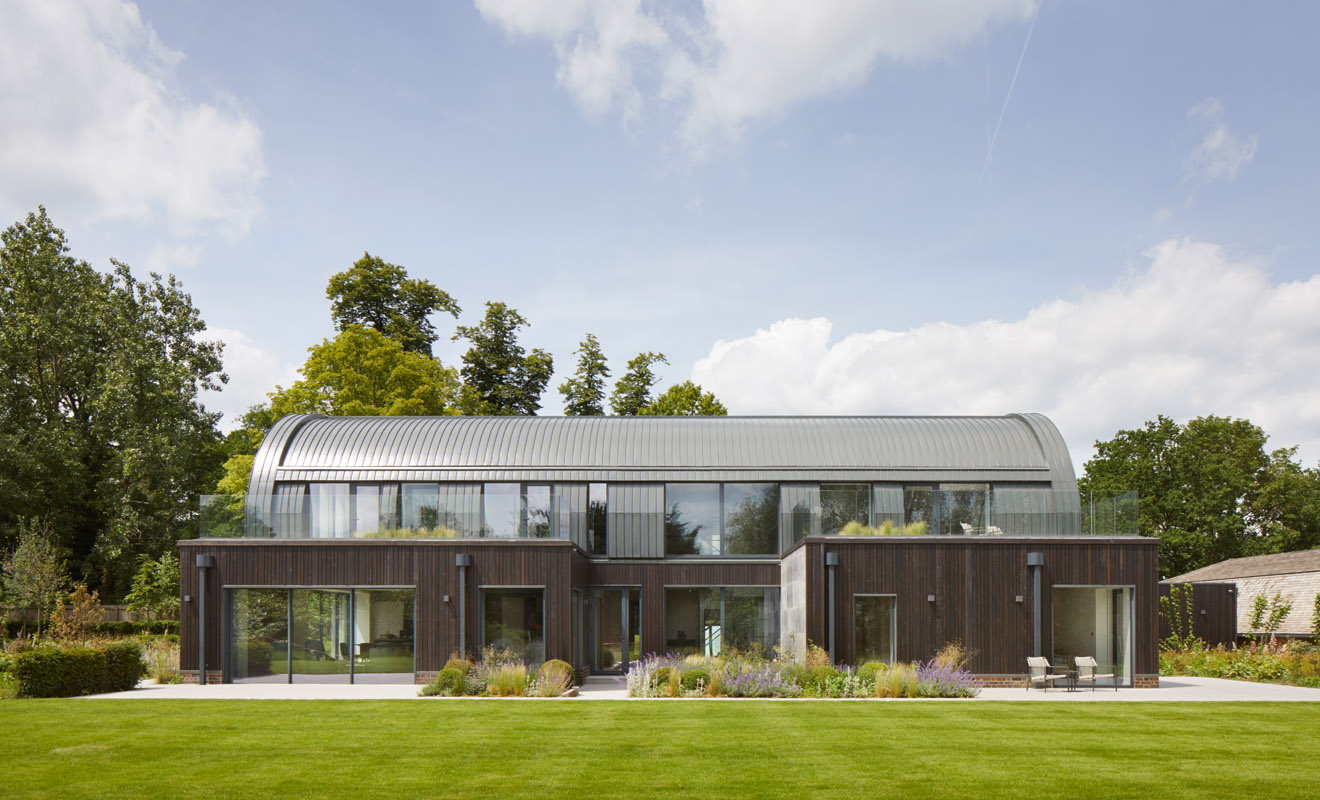How Established Are Net Zero Architects At This Present Moment?
If you have spent any time reviewing Net Zero Architects in the last few days, you’ve presumably noticed how bewildering the concept can be.
There are occasions when residents and businesses wish to replace an existing building with a new one. National planning policy allows such development providing the new building is in the same use and not materially larger than the one it replaces. In assessing whether a replacement building is materially larger than the existing one and otherwise acceptable in Green Belt terms, the Council will compare their relative sizes and changes in built form. The location of the replacement building within the site may also be an important factor. Architects of green belt buildings value mutual respect, transparency and fairness - maintaining a high level of trust, particularly during future restructuring and in relation to business finances. In architecture,the term “sustainability” has been used in various contexts. Some of which is to indicate being eco-conscious, an environmentalist, or “meeting our own needs without compromising the ability of future generations to meet their own needs” using natural, social, and economic resources. The development of gap sites within a recognisable cohesive group of houses in the green belt may be acceptable where it would not damage the character of the group or the wider countryside. The suitability of a site for this form of development will also depend on the character of the surroundings and the number of such groups in the area in order to avoid cumulative impact. Sustainable building practices reduce the negative effects of construction on the environment by protecting existing ecosystems and biodiversity, and by reducing CO2 emissions. Architects and builders need to take a 360 approach to environmental considerations throughout the design and construction process to order to best maximise these benefits. The London Metropolitan Green Belt now comprises 153,860 hectares of land covering parts of London and eight adjacent counties. However, there is a growing recognition among some planners, developers and politicians that Green Belt policy is having unintended consequences.

Greenbelts have been a mainstay planning approach to manage urban development and protecting farmland and natural areas for more than one hundred years. Defined as natural areas and open lands surrounding cities, towns or regions, greenbelts often contain a combination of public and private lands on which there are development restrictions. Balancing commercial requirements with local context, the strategic advice of green field architects supports smarter, sustainable development. The method isn't without its flaws and there are some refinements which would greatly benefit a fair and balanced plan for growth. There is clear evidence that while green belts have stopped urban expansion (for some cities), they have resulted in unintended consequences such as higher-density development at the urban fringe, including disconnected “edge cities”, and “leapfrogging” development over the green belt to undermine other areas of countryside. Arguments for the release of a proportion of land within the Green Belt, especially around transport hubs and on the edges of existing settlements, are compelling, but they are only adjustments to the planning system. Such arguments also tend to ignore the realities of where affordable housing is actually needed – mostly in the city. Formulating opinions on matters such as Architect London can be a time consuming process.
Green Belt Planning Permission Relies On The Quality Of Your Design
Architects that design for the green belt design buildings of architectural excellence designed to create a sense of belonging for their owners and the ability to be fully integrated and identified with their specific site. The government are working on improving access to public land records, allowing you to check certain restrictions on land. You should contact your local planning authority to find out if your land is in a green belt area, and any policies or restrictions that may apply as a result. Green belt planners and architects work closely with residential clients to breathe life into buildings and to adapt each home to client's way of life,their design tastes and budget. The improved quality management processes needed to deliver a net zero carbon development will bring increased longevity, allowing our buildings to function better for longer. Green belt architectural businesses aim to respond to the particular context of each site and believe that every project should belong intimately to its place. All their work is framed by the need to address the challenges of the climate emergency. Conducting viability appraisals with Net Zero Architect is useful from the outset of a project.
As London grows into a higher-density city, so more people need green spaces. Land and biodiversity protection policies increasingly recognise their value, and require that they should be enhanced in future. When cities grow, land protection policies should be strengthened rather than weakened or abandoned. The successful conversion of a property in the green belt will take account of and respect the style and detail of the building(s), bring out the character, retain and re-use features and retain and use the existing spatial qualities of the interior. It is clear that Green Belt land is making an important contribution to the full range of cultural ecosystem services including healthy lifestyles, educational activity, opportunities for outdoor sport and social well-being. With its proximity to the majority of the population there is scope to do more to encourage outdoor education, recreation and sport close to where people live. A smart structural design saves you time and money during the construction, and having the structural engineer in the office is a big advantage over other architectural companies. Green belt architects are able to provide their clients with a comprehensive Architecture Planning service from very first appraisals right through to completion of works and also beyond. Designing around New Forest National Park Planning can give you the edge that you're looking for.
The Level Of Protection
To truly achieve sustainability in design, we should use passive design measures as much as we can to address health and wellness related challenges, as we search for a balance between wellness and energy efficiency. The Green Belt has numerous benefits, from allowing us to grow food near where we live, to encouraging investment in our towns and cities and therefore keeping cost of infrastructure down. Green Belts also contain a significant proportion of our nature reserves with more than double the national density of public rights of way, thus protecting our valuable environment and enabling access to countryside nearby. The objective of defining a conservation area is to provide for the preservation and enhancement of the special interest of the place. The intention is not to stifle change, but to monitor and provide positive management of these unique areas. Green belt architects will coordinate teams of design, engineering and construction professionals; to help you navigate building codes and planning requirements and they will lead the design of the project to ensure that the project is built the way that you intend. Sustainability means reducing and/or offsetting the potentially negative impacts of developing land which has (in theory) been left open chiefly for social (recreational) and environmental benefit, by making positive additions to that land that did not exist before. A well-thought-out strategy appertaining to GreenBelt Land can offer leaps and bounds in improvements.
With an intricate understanding of planning policies, green belt architects provide an invaluable insight into the best approach to achieve a desired outcome and into the commercial aspects of the legislation to optimise planning gain. The overwhelming need is for affordable, low-carbon homes in sustainable locations, and suited to our ageing population. The volume housebuilders, with few exceptions, focus on lower density, car-dependent developments, with lacklustre environmental performance. Green belt architectural companies offer services for all stages of a building project; from briefing and feasibility, to concept design and overseeing work on site as contract administrators. There is a general presumption against granting planning permission for new dwellings in the Green Belt not associated with agricultural or forestry workers by most councils. Exceptions to this policy must be justified by evidence of very special circumstances which must be demonstrated A specialist team of architectural designers and planners will have numerous years’ experience in producing high quality designs for both commercial and domestic customers throughout the UK. Local characteristics and site contex about Green Belt Planning Loopholes helps maximise success for developers.
The Scene Is Changing
There are people whom see the Green Belt as protected areas, recreational spaces – the “green lungs” of the city – adding to the character and the quality of life of an area. They see the Green Belt as areas of significant landscape quality, protecting valuable agricultural land and wildlife habitats which enhance biodiversity. For nearly 200 years, green belts have been prey to cultures intolerant of limitation. Consequently, they are closed, unloved landscapes, bereft of biodiversity and constraining in a sense that is far more insidious than their creators imagined. The NPPF acknowledges that certain other forms of development are also not inappropriate in the Green Belt. One example includes the re-use of buildings, such as the equestrian barn in this case, provided that the buildings are of permanent and substantial construction. You can check out supplementary information regarding Net Zero Architects in this House of Commons Library page.
Related Articles:
Supplementary Insight About London Green Belt Architects
More Insight On Green Belt Architects
Extra Insight About Architects Specialising In The Green Belt
More Background Insight On Green Belt Consultants
More Background Information On Net Zero Architects
Supplementary Findings About Green Belt Architectural Companies
More Background Information About Architectural Designers
 Today. It's Free!
Today. It's Free!

